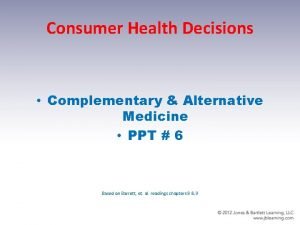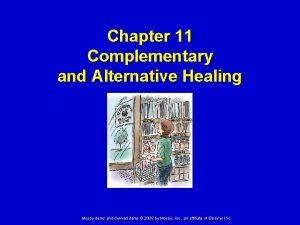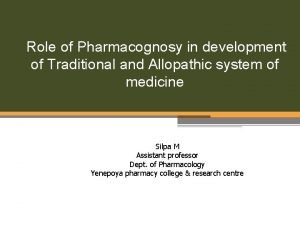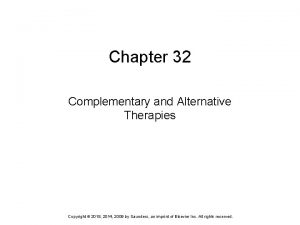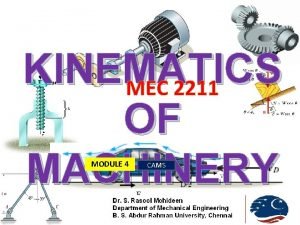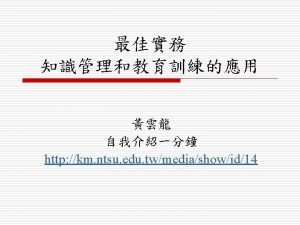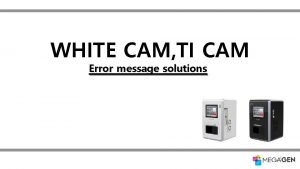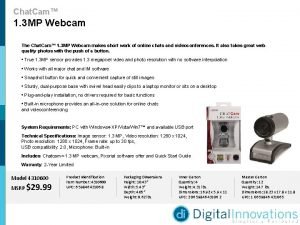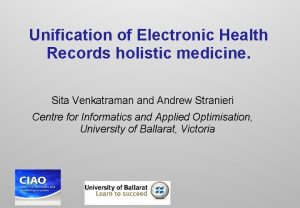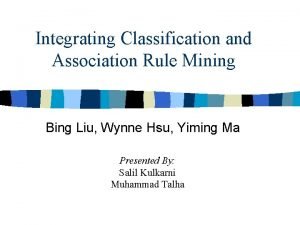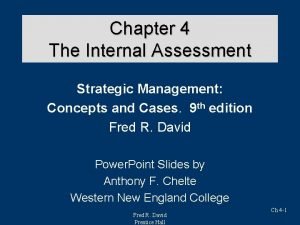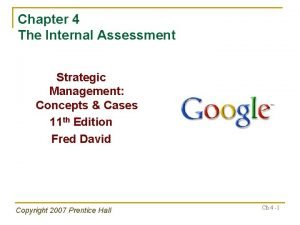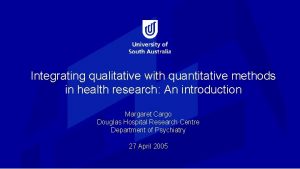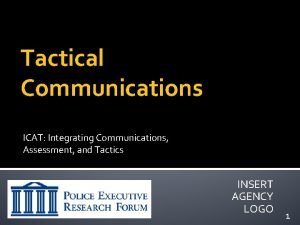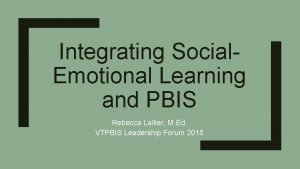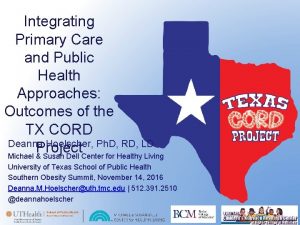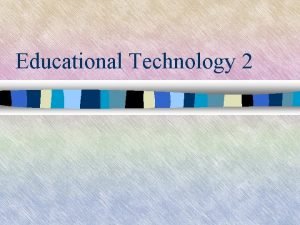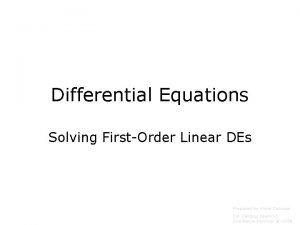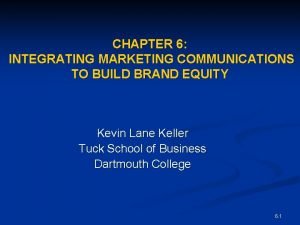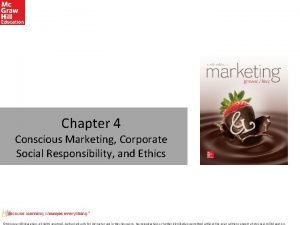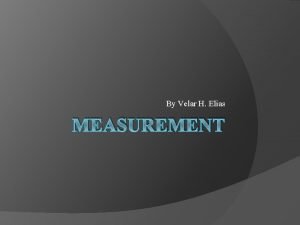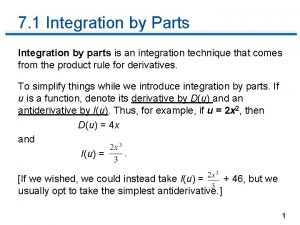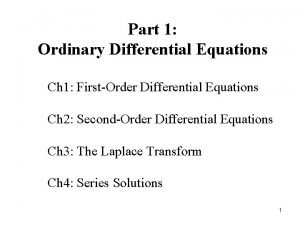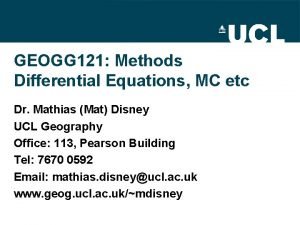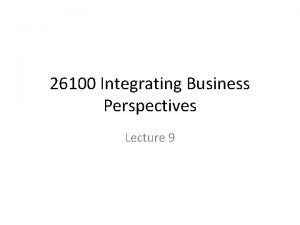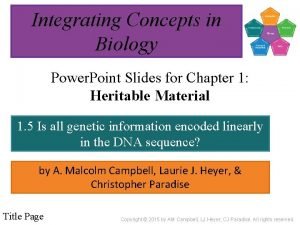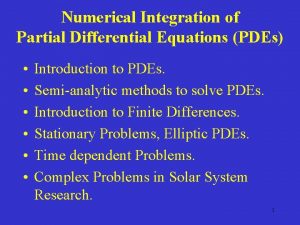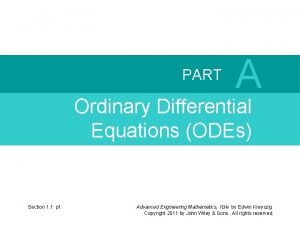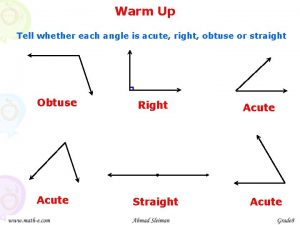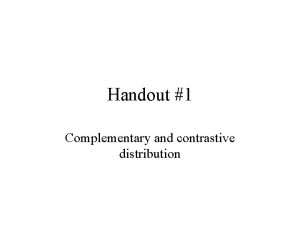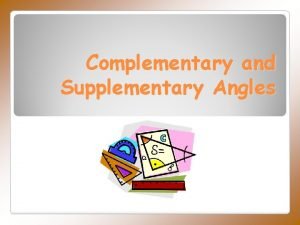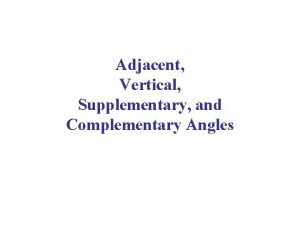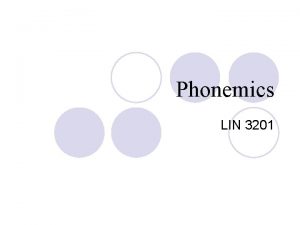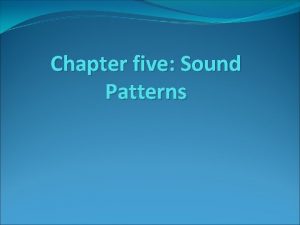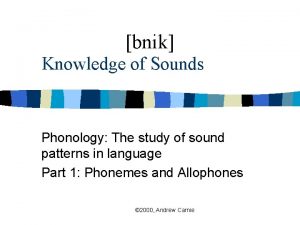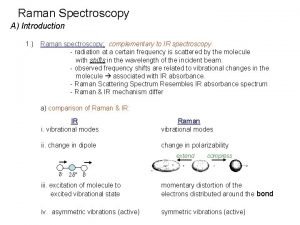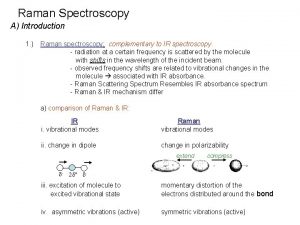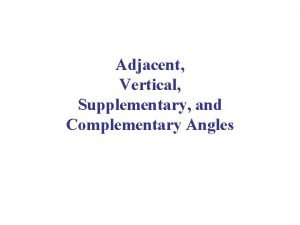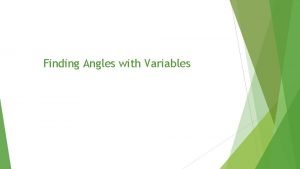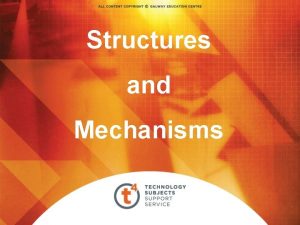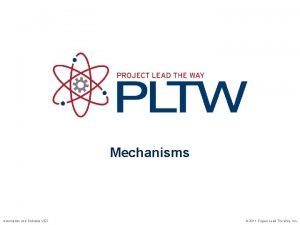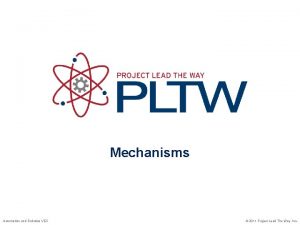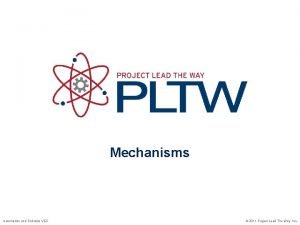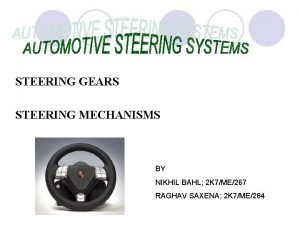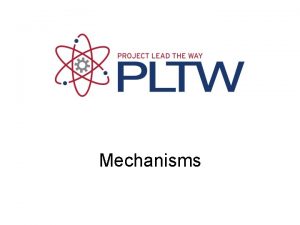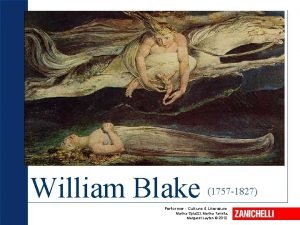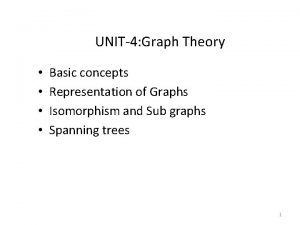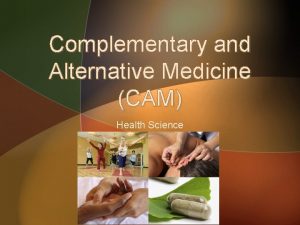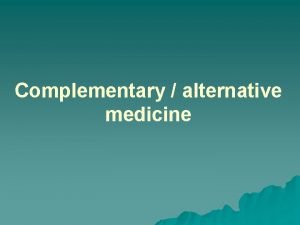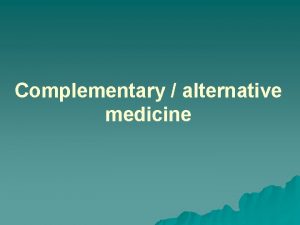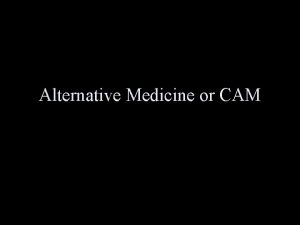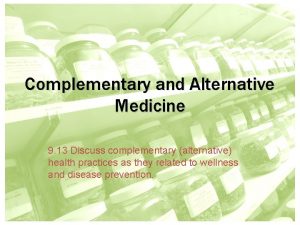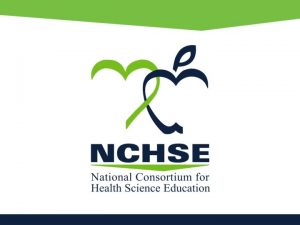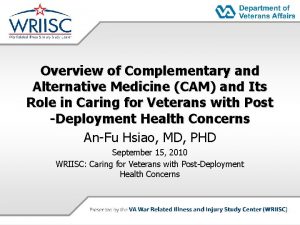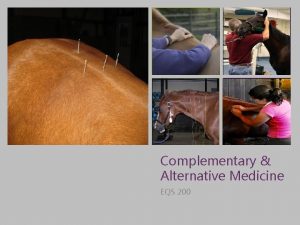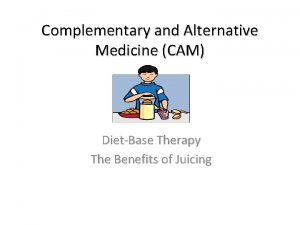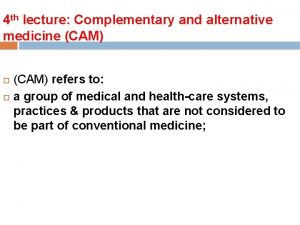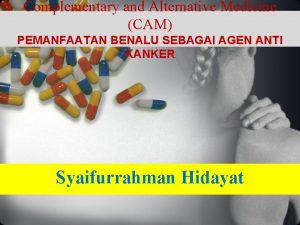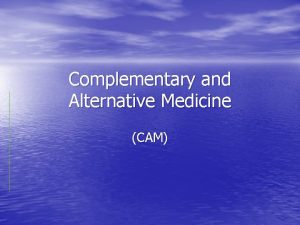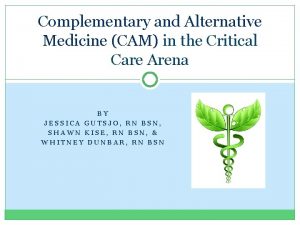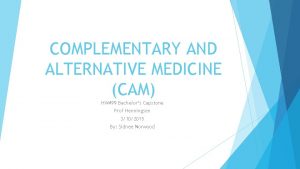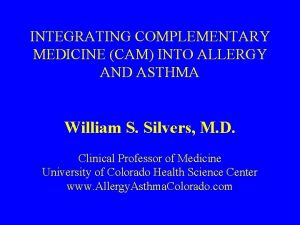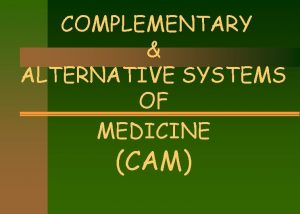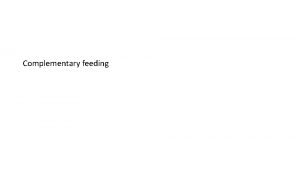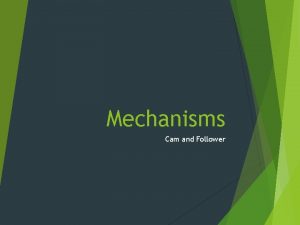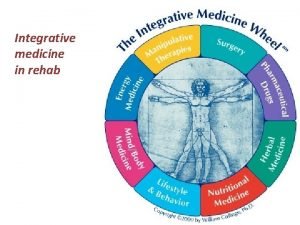Integrating Complementary and Alternative Medicine CAM with Allopathy

































































- Slides: 65

Integrating Complementary and Alternative Medicine (CAM) with Allopathy Merging old and new through Evidence Steven M. Schwartz, MD Introduction to Health Care Georgetown University School of Medicine February 02, 2007

Institute of Medicine: Committee Recommendation “The committee recommends that health profession schools (e. g. schools of medicine, nursing, pharmacy, and allied health) incorporate sufficient information about CAM into the standard curriculum…to enable licensed professionals to competently advise their patients about CAM. ” Complementary and Alternative Medicine (CAM) in the United States Institute of Medicine Report, January 2005

Educational Initiative in CAM at Georgetown U School of Medicine Broad objective By the end of the project period, all graduates of Georgetown University School of Medicine will have an improved level of awareness about CAM information and practices, so that they will be able to understand follow advances in CAM, as well as advise and communicate more effectively with their patients

Learning Objectives • Define complementary and alternative medicine (CAM) – List domains and provide description and examples – Describe relationship to conventional medicine • Describe use of CAM is the US – Prevalence of use – Characteristics of users and practitioners – Implications for clinicians • Discuss strategies for evaluation and integration – Disparate paradigm – Role of evidence in CAM and Conventional – Levels of integration

Definitions • Alternative Medicine – Used in place of conventional medicine • Complementary Medicine – Used together with conventional medicine • Integrative Medicine – Combines CAM and conventional medical therapies for which there is some high-quality scientific evidence of safety and effectiveness

Complementary and Alternative Medicine (CAM) Broad range of healing philosophies and practices not taught widely in medical schools, not generally used in hospitals, and not usually reimbursed by medical insurance companies Healing therapies that typically fall outside the Western biomedical model of disease, diagnosis, and treatment (Drivdahl 1998) Conventional Medicine Allopathy/Osteopathy Disease model using pharmaceuticals and surgery as primary modes of treatment

Complementary and Alternative Medicine (CAM) The list of what is considered to be CAM changes continually as those therapies that are proven to be safe and effective become adopted into conventional health care and as new approaches to health care emerge. NCCAM 2003 “ Once there is evidence (for a CAM therapy) it is not alternative or complementary it is conventional” (Siwek)

Integrative Medicine The practice of medicine that reaffirms the importance of the relationship between practitioner and patient, focuses on the whole person, is informed by evidence, and makes use of all appropriate therapeutic approaches, healthcare professionals and disciplines to achieve optimal health and healing (Consortium Academic Health Centers for Integrative Medicine, 2004)

CAM Domains • • • Alternative Medical Systems Mind-Body Interventions Biological-Based Therapies Manipulative and Body-Based Methods Energy Therapies (as categorized by NCCAM, http: //nccam. nih. gov)

CAM Domains Image removed rights unavailable ( graphic of the 5 CAM domains)

Whole Medical Systems • Complete systems of theory and practice that have evolved independent of and prior to the conventional biomedical approach – Traditional Systems (TCM, Ayurveda, Tibetan, etc. ) – Naturopathic Medicine (health restoration rather than disease treatment) – Homeopathy (“like cures like”) (as categorized by NCCAM, http: //nccam. nih. gov)

Mind-body Interventions • Techniques designed to facilitate the mind’s capacity to affect bodily function and symptoms – Meditation – Breathing techniques – Imagery – Biofeedback – Prayer and Spirituality (as categorized by NCCAM, http: //nccam. nih. gov)

Biologically Based Therapies • Includes natural and biologically-based practices, interventions, and products, many of which overlap with conventional medicine’s use of dietary supplements – – Herbal therapies (plant or plant products) Special diets (Atkins, Ornish, Pritkin) Orthomolecular (mega-dose vitamins) Biological therapies (shark cartilage, bee pollen) (as categorized by NCCAM, http: //nccam. nih. gov)

Manipulative and Body Based Methods • Methods that are based on manipulation and/or movement of the body – Chiropractic – Massage Therapy – Osteopathic Medicine (as categorized by NCCAM, http: //nccam. nih. gov)

Energy therapies • Energy therapies focus on either energy fields originating within the body (biofields) or those from other sources (electromagnetic fields) – Qi Gong (TCM: combines movement, meditation and breathing) – Reiki (Japanese: channeling spiritual energy) – Therapeutic Touch (“laying of hands”) (as categorized by NCCAM, http: //nccam. nih. gov)

Use of CAM Therapies in the US • Estimates from 1990 to 1997, increase from 34% to 42% of public use CAM • Visits to CAM providers (629 million) exceeded visits to primary care physicians (386 million) • CAM related out-of-pocket expenditures >$27 b • Majority of CAM users do not reject conventional medicine, but find CAM to be more congruent with their own values, beliefs, and philosophical orientations toward health and life (Eisenberg DM et al Trends in Alternative Medicine use in the United States: 1990 -1997; results of a follow-up national survey, JAMA, 1998)

CAM Use among Adults in US: 2002 • NCCAM and CDC’s National Center for Health Statistics(Barnes et al 2004) • Data from 2002 National Health Interview Survey • Nationally representative sample of 31, 044 US adults • Questions on 27 types of CAM including 10 providerbased therapies, specific types of diets, a range of mind-body therapies, and the use of prayer for health purposes • Analysis includes demographic factors, medical conditions treated, and reasons for using CAM

CAM Use in the United States • 62% of adults used CAM in the past year • More women than men; higher educated; sicker; with more pain Top 10: – – – – – 43% prayed for self 24% others prayed for you 19% natural products 12% deep breathing exercises 10% participate in prayer group 8% meditation 8% chiropractic 5% yoga 5% massage 4% diet-based therapies Barnes et al. , CDC ADR, 2004



0 nly 17% if exclude prayer

Most people use CAM to treat themselves since only 12% used a licensed CAM practitioner 1. 7% each for Atkins and vegetarian diets



CAM Use in the US • 21% of patients in primary care practices reported using CAM for the same health problem for which they sought conventional care on that visit (Palinkas 2000) • 16 -18% of patients taking prescription medications also take herbal remedies (Kaufman 2002) • Between 60 and 94% of rheumatic disease patients use CAM (Ramos-Remus 1999)

CAM Use in the US <40% of therapies used were disclosed to the physician Why? Because they were not asked. (Eisenberg DM et al Trends in Alternative Medicine use in the United States: 19901997; results of a follow-up national survey, JAMA, 1998)

Why does this matter? • The substantial overlap between use of prescription medications and herbal supplements raises concerns about unintended interactions. • Patient use of CAM is often a clue to values and preferences that need to be acknowledged. Kaufman 2002

Who Uses CAM? • More educated • In poorer health • More affluent • Possess a holistic orientation to health • Had a ‘transformational experience’ • Identification with environmentalism, feminism, spirituality • Report chronic anxiety, pain, back problems (Astin et al. JAMA , 1998)

Why do people use CAM? • • • Desire for health and wellness Prevention Pain control Conventional treatments not effective Paradigm/Belief system Time? Being heard? Trust?

Paradigm beliefs and values • • • Conventional Disease is defined by specific pathology Organ is externally broken (congenital acquired or invaded) Dx and Tx based on grouping “diabetics” War model “Battle cancer” Physician has the cure Pt follows orders CAM • The body has selfhealing potential. • Body mind and spirit are all important. • Illness is system out of balance • Therapy must be individualized. • People are responsible for their own healing. adapted from Curtis 2003

CAM Economics • Americans spend more out-of-pocket for CAM than for all other health care needs • CAM is big business • 56% of Americans believe their health plans should cover CAM • Many health insurers and HMOs now cover CAM: Blue Cross of Washington and Alaska, Oxford Health, Prudential, Kaiser Permanente

Who Provides CAM Therapies? • Medical doctors • CAM practitioners • Traditional healers

Conventional Health Care Providers: Conventional vs. CAM Practitioners Eisenberg, D. M. et al. , Credentialing Complementary and Alternative Medical Providers. Ann Intern Med. 2002; 137: 965 -973.

Schools for Health Professionals Eisenberg, D. M. et al. , Credentialing Complementary and Alternative Medical Providers. Ann Intern Med. 2002; 137: 965 -973.

Consortium of Academic Health Centers for Integrative Medicine – – – – Duke University Harvard University of Arizona UCSF University of Maryland University of Massachusetts University of Minnesota Albert Einstein College of Medicine/ Beth Israel Medical Center Georgetown University Thomas Jefferson University Columbia University of Michigan George Washington University Oregon Health Sciences University – – – – University of Calgary UCLA University of Hawaii University of Medicine and Dentistry of New Jersey University of Pennsylvania University of Pittsburgh University of Texas-Galveston University of Washington University of Connecticut University of New Mexico University of Alberta Wake Forest University Laval University of California at Irvine

State of Research in CAM Research funding at NIH • • FY 1992 OAM $ 2. 0 M FY 1998 OAM $ 19. 5 M FY 1999 NCCAM $ 50. 0 M FY 2004 NCCAM $ 117. 7 M Total CAM at NIH $ 273. 4 M http: //nccam. nih. gov

NCCAM R 25 Grant Institutions • • • Children’s Hospital – Boston • Rush College of Nursing University of Minnesota University of North Carolina • University of Texas-Galveston • Georgetown University • Maine Medical Center Tufts University of Michigan • University of Washington Oregon Health Sciences University U California-San Francisco University of Kentucky University of Washington School of Nursing American Medical Student Association

Desire for Future Training >50% of the students would like enough knowledge to • personally provide their patients: – Nutritional supplements • advise their patients on: – – Acupuncture Herbal medicine Chiropractic Massage

Evaluating CAM Key Conclusions § Same principles and standards of evidence of treatment effectiveness should apply to all conventional and CAM interventions § Emphasize health services research and consider ethical, legal, and social implications of CAM research and integrated medicine § Ensure rigor in CAM studies IOM Study on CAM (Jan 2005)

Evaluating CAM/AM Use Evidence-Based Medicine • The conscientious, explicit, and judicious use of current best evidence in making decisions about the care of individual patients. The practice of evidence based medicine means integrating individual clinical expertise with the best available external clinical evidence from systematic research. • Integration of best research evidence with clinical expertise and patient values.

Evidence Examples Effect of Hypericum perforatum (St John's wort) in major depressive disorder: a randomized controlled trial. JAMA. 287(14): 1807 -14, 2002 Apr 10 Authors conclusion: “This study fails to support the efficacy of H perforatum in moderately severe major depression. ” Results: Full response occurred in 31. 9% of the placebo-treated patients vs 23. 9% of the H perforatum-treated patients (P =. 21) and 24. 8% of sertraline-treated patients (P =. 26).

Evidence Examples Against Depression, a Sugar Pill Is Hard to Beat Placebos Improve Mood, Change Brain Chemistry in Majority of Trials of Antidepressants By Shankar Vedantam Tuesday, May 7, 2002; Page A 01 “ 96 antidepressant trials between 1979 and 1996 showed that in 52 percent of them, the effect of the antidepressant could not be distinguished from that of the placebo” -Kahn

Evidence Examples Moseley et al. A controlled trial of arthroscopic surgery for osteoarthritis of the knee. NEJM. 347(2): 81 -8, 2002 Jul 11 180 patients randomly assigned to arthroscopic debridement, arthroscopic lavage, or placebo surgery. Results: ”At no point did either of the intervention groups report less pain or better function than the placebo group”. “Furthermore, the 95 percent confidence intervals for the differences …exclude any clinically meaningful difference. ”

Evidence in Allopathy Many conventional treatments • have been adopted without good quality research • are costly • are invasive • are likely to have adverse effects • AND often provide inadequate relief.

And CAM? CAM interventions generally • are low cost(? ) • are low-risk • are free of serious side effects* • AND are widely used. • Evidence Growing for and against

CAM: Evidence and Research Some common conditions • Low back pain • Osteoarthritis

CAM: Evidence and Research Low Back Pain Current evidence for: • Acupuncture • Massage • Spinal manipulation – acute>chronic • Stress management Cherkin 2001; Ernst 2001; Furlan 2002; Astin 2004

CAM: Evidence and Research Low Back Pain Research in progress on • Acupuncture • Yoga, exercise, and self-care education • Usual care vs alternatives – Acupuncture – Massage – Chiropractic www. nccam. nih. gov/clinicaltrials

CAM: Evidence and Research Osteoarthritis Current evidence for • Acupuncture • Exercise • Herbal medicine (devil’s claw, willow bark) • Homeopathy • Supplements (glucosamine, chondroitin)

Graphic removed rights unavailable Grahic depicts safety on verticle efficacy on horizontal - guideline for recommendations to pts.

Towards Integration • Ask and listen to our patients, • Use best evidence • Advocate for better evidence-based research • Acknowledge the patient values that may be more relevant to a given individual or for a particular situation.

Integrative Medicine • Opportunity to bring together strengths and balance weaknesses of different systems of health care • For the benefit of patients Owen 2001

Questions?

Botanicals and Dietary Supplements (Bonus material not on exam)

Use of Natural Products • 19% of adults use natural products, including herbal medicine, functional foods (garlic), and animal-based supplements (glucosamine) during past 12 months (Barnes et al 2004) • Herbal therapy is used by 12 -14% of the US population, up from 2. 5% in 1990 (Kaufman 2002) • 16 -18% of patients taking prescription medications also take herbal remedies


Challenges of Natural Products • Safety is assumed, not proven • Products are not standardized • Contamination with drugs and heavy metals • Allergic reactions • Some are toxic • Interactions with drugs • Replacing proven therapies

Dietary Supplement Health and Education Act 1994 (DSHEA) • Law defined a new category of food: a product intended to supplement the diet • Contains one or more of the following: – – – Vitamin Mineral Herb or other botanical (not tobacco) Amino acid Any other dietary substance • Structure-function claims permitted • Product must not be intended to diagnose, treat, cure or prevent any disease

Dietary Supplement Health and Education Act 1994 (DSHEA) • No requirement to prove safety or efficacy before marketing • Product is considered safe, unless proven UNSAFE by FDA • No regulation of manufacturing process

Issues Regarding Herbs and Dietary Supplements • Effectiveness – Do they do what they say they do? • Safety – Do they have side effects? • Quality assurance – Are they what they say they are? • Drug interactions – What do they do to other prescribed medications?

Strategies for integration of CAM • Protect against dangerous practices. • Permit practices that are harmless and that may help. • Promote and use practices that are safe and effective. • Partner with patients and encourage communication about CAM. Jonas 2000

Question: Is “permit” the right word here? Do physicians have the power to “permit” practices that their patients choose?

Advising patients about CAM Use evidence for • efficacy • safety to place therapy on continuum recommend accept discourage Weiger 2002

Integrative Medicine Requires a paradigm shift from • Disease-centered approach of conventional biomedicine to • an approach in which patient values and participation of patients are central. Maizes 1999

Towards Integration The satisfaction that patients report from relationship-centered and individualized CAM therapies serves to remind us: We can never know with certainty what therapy- alternative or otherwise- will work for an particular patient, no matter what randomized controlled clinical trials indicate.
 Evidence based medicine ppt
Evidence based medicine ppt Chapter 11 complementary and alternative medicine
Chapter 11 complementary and alternative medicine Madar kabab chini tagar are the examples of which medicine
Madar kabab chini tagar are the examples of which medicine Chapter 32 complementary and alternative therapies
Chapter 32 complementary and alternative therapies Cam nomenclature
Cam nomenclature 國體eeclass
國體eeclass External estop requested
External estop requested Chat sexcam
Chat sexcam Holistic medicine emr
Holistic medicine emr Integrating classification and association rule mining
Integrating classification and association rule mining Exemplifies the complexity of relationships
Exemplifies the complexity of relationships Non exact ode calculator
Non exact ode calculator Integrating science and social studies
Integrating science and social studies Integrating strategy and culture in internal assessment
Integrating strategy and culture in internal assessment Integrating qualitative and quantitative methods
Integrating qualitative and quantitative methods Integrating communications assessment and tactics
Integrating communications assessment and tactics Integrating sel and pbis
Integrating sel and pbis Integrating public health and primary care
Integrating public health and primary care Weaving quotes into your writing
Weaving quotes into your writing Embedded quotes mla examples
Embedded quotes mla examples Sensory input integration and motor output
Sensory input integration and motor output Differential equation exponential solution
Differential equation exponential solution Microsoft dynamics ax plm
Microsoft dynamics ax plm Middle level integration
Middle level integration First order differential equation formula
First order differential equation formula Integrating marketing communication to build brand equity
Integrating marketing communication to build brand equity Conscious marketing definition
Conscious marketing definition Integrating type dvm
Integrating type dvm Integrating by parts
Integrating by parts Stagnating stage of a relationship
Stagnating stage of a relationship Integrating factor
Integrating factor Dialogue quote vs flow quote
Dialogue quote vs flow quote Seperation of variables
Seperation of variables First ode
First ode Project indicator enables a software project manager to
Project indicator enables a software project manager to Blending quotations
Blending quotations Integrating business perspectives
Integrating business perspectives Paragraph writing
Paragraph writing Integrating concepts in biology
Integrating concepts in biology Integrating partial differential equations
Integrating partial differential equations Integration of composite function
Integration of composite function Integrating factor
Integrating factor Adjacent complementary supplementary and vertical angles
Adjacent complementary supplementary and vertical angles Complementary and supplementary angles formula
Complementary and supplementary angles formula What is contrastive distribution
What is contrastive distribution 43⁰
43⁰ Are complementary angles adjacent
Are complementary angles adjacent Free variation and complementary distribution
Free variation and complementary distribution Free variation and complementary distribution
Free variation and complementary distribution Free variation and complementary distribution examples
Free variation and complementary distribution examples Free variation and complementary distribution
Free variation and complementary distribution What is the difference between ftir and raman spectroscopy
What is the difference between ftir and raman spectroscopy Why are raman and ir complementary
Why are raman and ir complementary Adjacent and complementary angles
Adjacent and complementary angles Angles a and b are complementary
Angles a and b are complementary Angle klm and angle mln are complementary
Angle klm and angle mln are complementary Cam and follower mechanism examples
Cam and follower mechanism examples Vex cam and follower
Vex cam and follower Cam and follower vex
Cam and follower vex Lead screw vex
Lead screw vex Worm and sector steering gear
Worm and sector steering gear Is the flow of power reversible in a cam and follower
Is the flow of power reversible in a cam and follower Complementary opposites blake
Complementary opposites blake William blake complementary opposites
William blake complementary opposites Graph theory basic concepts
Graph theory basic concepts Articulation of phonemes
Articulation of phonemes
